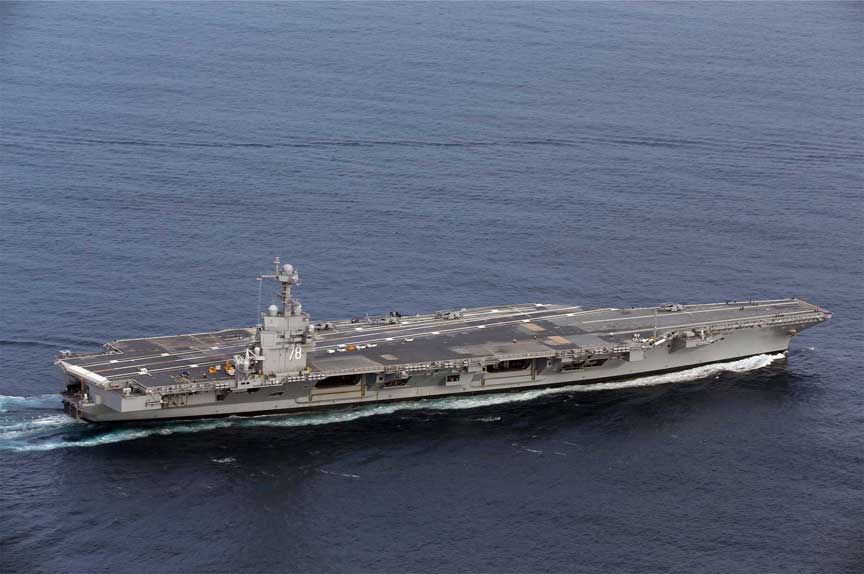Gerald Ford CVN 78

USS Gerald R. Ford (CVN-78)
GERALD R. FORD CLASS:
BUILDER: Huntington Ingalls Industries – Newport News Shipbuilding
COMMISSIONED: July 22, 2017
PROPULSION: Two nuclear reactors, four shafts
LENGTH: 1,092 feet
BEAM: 134 feet, Flight Deck Width: 256 feet
DISPLACEMENT: Approximately 100,000 long tons full load
SPEED: 30+ knots (34.5+ miles per hour)
CREW: Approximately 4,550 (ship, air wing, and staff)
AIRCRAFT: 75+
ARMAMENT: Evolved Sea Sparrow Missile, Rolling Airframe Missile, CIWS
Overview
The USS Gerald R. Ford (CVN-78) is the lead ship of the Ford-class aircraft carriers of the United States Navy. It is the most technologically advanced aircraft carrier ever built and is designed to replace the Nimitz-class carriers.
Early History
Construction and Launch
The contract for the construction of USS Gerald R. Ford was awarded to Huntington Ingalls Industries – Newport News Shipbuilding on January 10, 2007. The keel was laid on November 14, 2009. The ship was launched on October 11, 2013, in a ceremony attended by shipbuilders, Navy officials, and the Ford family. The ship was christened by Susan Ford Bales, daughter of the ship’s namesake, President Gerald R. Ford.
Commissioning
USS Gerald R. Ford was commissioned on July 22, 2017, at Naval Station Norfolk. The commissioning ceremony was a significant event, marking the introduction of the most advanced aircraft carrier in the world into the U.S. Navy fleet. President Donald Trump delivered the principal address, highlighting the ship’s advanced capabilities and its role in strengthening national security.
Technological Advancements
Electromagnetic Aircraft Launch System (EMALS)
One of the most notable features of the USS Gerald R. Ford is the Electromagnetic Aircraft Launch System (EMALS). This system replaces traditional steam catapults with electromagnetic energy to launch aircraft. EMALS provides a smoother acceleration, which reduces stress on the airframes of the aircraft and allows for the launch of a wider range of aircraft types.
Advanced Arresting Gear (AAG)
The Advanced Arresting Gear (AAG) is another innovative feature. It uses a new system of cables and winches to catch aircraft landing on the carrier. This system is designed to handle a broader range of aircraft, including lighter unmanned aerial vehicles and heavier manned aircraft, providing greater flexibility and safety.
New Features
The USS Gerald R. Ford incorporates numerous other advanced technologies, including:
• New Radar System: Enhances the carrier’s ability to detect and track targets.
• Advanced Weapons Elevators: Designed to move ordnance more efficiently and safely.
• Flight Deck Design: Redesigned to improve aircraft handling, sortie generation rates, and operational efficiency.
Deployment and Service
The USS Gerald R. Ford is currently deployed in the Atlantic Ocean. Its advanced systems and technologies are continually tested and refined to ensure operational readiness. The carrier is expected to remain in service for at least 50 years, playing a crucial role in projecting U.S. naval power and ensuring maritime security.
